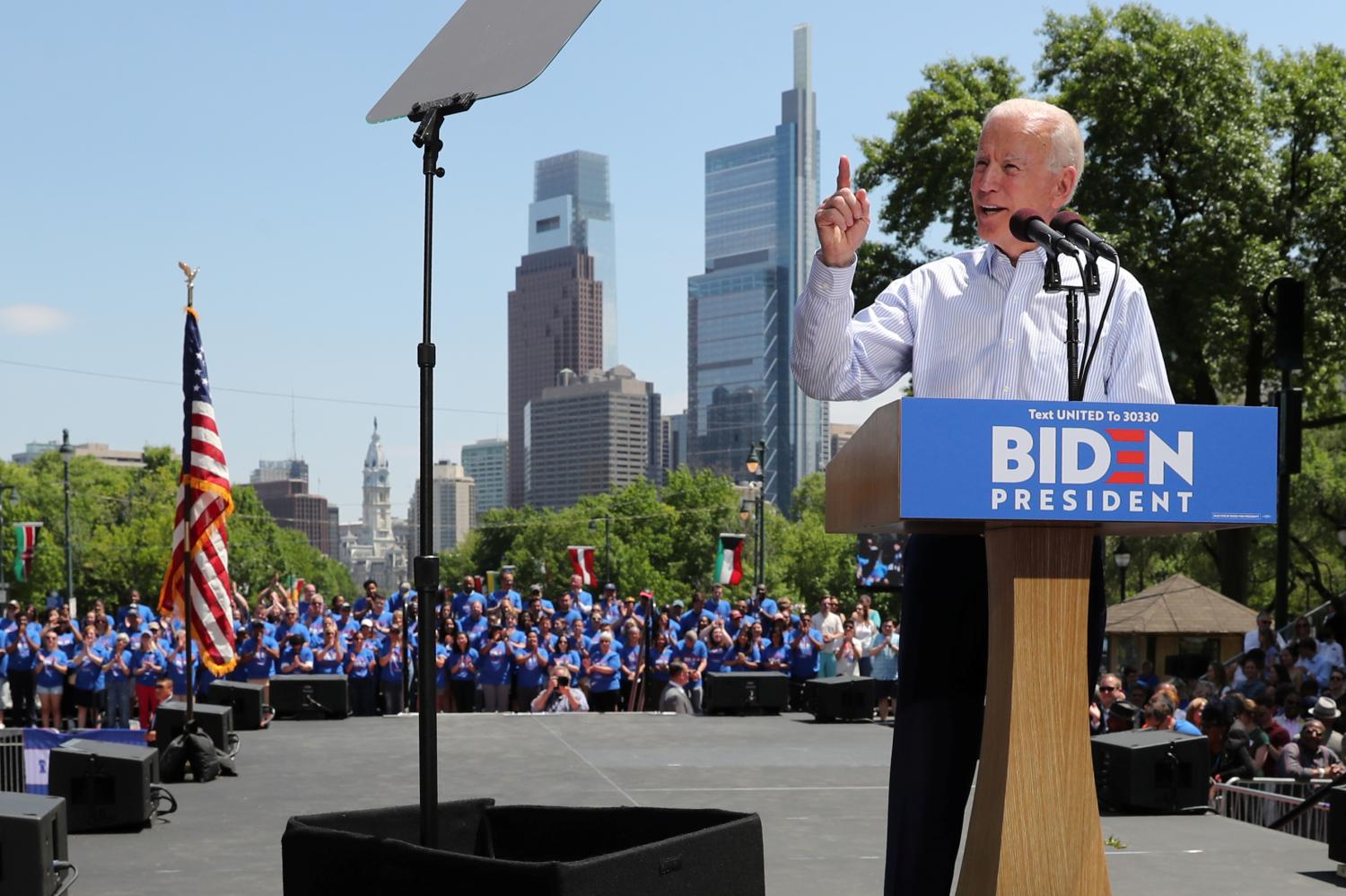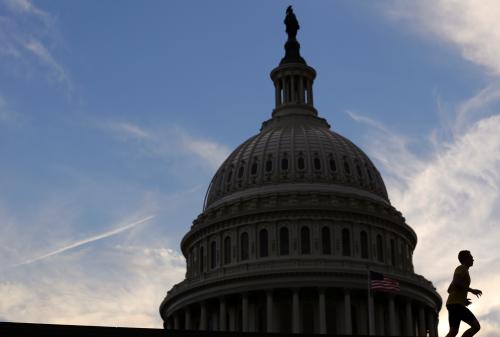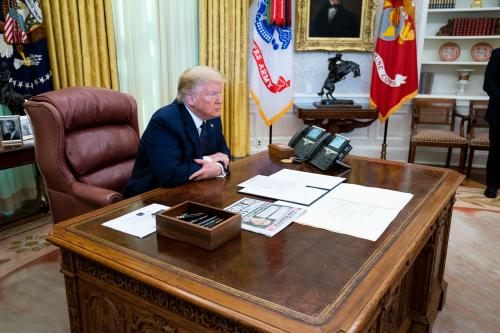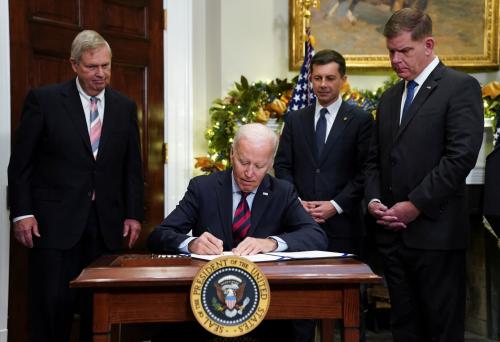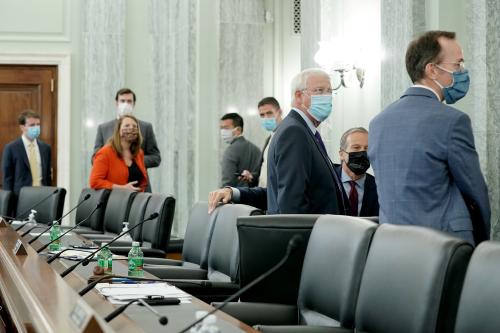The Trump administration has engaged in a high-profile effort to undo rules (sometimes called “regulations”) issued under President Obama. Their actions have generated a number of important legal and strategic lessons for future administrations, including a possible incoming Biden administration, which will seek to change some of their predecessor’s rules. As political polarization and legislative gridlock have grown, more policymaking is done through the rulemaking process, increasing the stakes and resulting conflict.
This piece covers the following actions that a Biden administration can undertake unilaterally and relatively quickly[1] to undo the work of its predecessor:
- Postponing the date on which a rule from the Trump administration becomes effective.
- Asking a court to place on hold pending litigation that challenges a rule from the Trump administration (which will usually delay the effective date) while the agency reconsiders the rule.
- Invoking a lower court decision that invalidated part or all of a prior administration’s rule as a basis to rescind the rule entirely.
The Trump administration did not invent any of these strategies, but it has used them expansively, yielding important lessons in the form of new court decisions and new strategic dynamics. In particular, a Biden administration should solicit meaningful public comment before seeking to delay the effectiveness of Trump-era rules. However, agencies should strongly consider asking lower courts that rule against Trump administration rules for an opportunity to revisit them before allowing further legal proceedings.
Delay the rule indefinitely
Upon taking office, the Trump administration sought to delay the date on which many rules issued late in the Obama era took effect. This is not a new strategy, but the Trump administration has used it aggressively, delaying rules longer. Rule delays before 2017 were generally short, thereby precluding the practical possibility of judicial review. The longer delays in the Trump administration have provided many supporters of rules issued late in the Obama administration greater opportunity and more time to mount a challenge to the delays, resulting in a new body of caselaw.
The Trump experience has underscored that, when successfully implemented, rule delays are useful, because they can prevent regulated parties from being required to comply with a rule slated for rescission or change. After regulated entities have invested the resources to comply, a rule change may be less attractive on policy grounds and more difficult to justify on legal grounds – since preventing certain fixed compliance costs cannot be counted as a “benefit” of changing the rule. This dynamic may be more pronounced for new rules that reduce regulation, but it is not strictly limited to deregulatory rules. Biden rules that increase regulation may be harder to justify if a Trump-administration-initiated rule weakening regulation goes through since, in all cases, rules reflecting a direct policy reversal are likely to face enhanced judicial scrutiny if challenged.
The promulgation of increasingly high-stakes rules creates more incentive for incoming administrations to undo what the previous administration has done.
Delaying rules is not without risk. Early attempts by the Trump administration to delay the enforcement or effect of rules led to several notable losses in court, which clarified the fairly robust procedural hoops agencies must jump through to delay a duly promulgated rule. The overarching lesson from these judicial rulings is that agencies generally must give the public an opportunity to comment before postponing a rule.[2]
However, simply providing an opportunity for public comment does not guarantee success. The Trump administration lost a number of delay cases notwithstanding formal adherence to public notice and comment protocols. Agencies therefore need to be careful and do the following work to successfully defend a delay in court:
- Explain and justify the reason for the delay and how that reason relates to the rationale provided for the original rule.
- Identify and request comment specifically on the impact of delaying the rule.
- Request comment on specific parts of the rule.
- Explain the agency’s legal authority to delay the rule.
- Provide enough time for commenters to participate meaningfully.
Determining whether delaying a rule is likely to be worthwhile to a Biden administration depends on several factors. A legally sufficient public comment process of the type just described consumes agency resources and time. In instances where the targeted rule is deregulatory (permissive of private sector conduct), it may not be worth the costs of running an additional notice and comment process since the delay is likely to provide less benefit (that is, lower cost savings) to the regulated community. On the other hand, in circumstances where the rule imposes substantial burdens on the regulated community that the incoming administration would like to see ultimately lifted, an agency may be willing to devote significant resources and incur the risk of losing in court. Beyond reputational costs, losing risks ceding control such that the prior rule is unexpectedly reinstated, which creates uncertainty. On the margin, in either case, agencies should be cognizant of the fact that a notice and comment period for delaying a rule will draw additional attention to the administration’s hostility toward it, giving the rule’s supporters more time and opportunities to come to the rule’s defense in court and possibly in the political arena as well.
Use the courts
High-profile rules are frequently challenged in court. The upshot is that, just as the Trump administration took office with the validity of many Obama-era rules still subject to litigation, an incoming Biden administration would likely need to confront numerous pending lawsuits over controversial Trump-era rules. How to navigate the litigation defense of a rule that the incoming administration would, in fact, like to kill raises a several difficult strategic questions for both government litigators and the agencies they represent.
To understand the quandary these types of cases would pose for a Biden administration, it is important to recognize what options are not available. A new administration, as a general matter, may not simply stop defending in court the legal validity of a rule that it opposes. And this is true even if incoming officials at the Justice Department question the rule’s legality. The Justice Department has no authority to change position in an ongoing litigation without authorization from its client, the agency; and DOJ’s traditional policy has been that an agency may only signal its change in position on a rule by amending or rescinding it. Thus, changing sides in an ongoing litigation is usually not a realistic option. One could imagine that a Biden administration would be tempted to “throw the fight” in its defense of a disfavored Trump-era rule, but this approach would be inconsistent with the litigators’ professional duties to their client and to the courts and so must be taken off the table as well.
These constraints leave an incoming administration with essentially two choices with respect to ultimate disposition of the rule: keep fighting to defend the rule or seek to halt the litigation in its tracks. The Trump administration often chose the latter course of action with respect to Obama-era rules, and it’s easy to see why. Pausing a case before a court has had a chance to rule on the validity of a rule eliminates the risk of an “adverse” decision – that is to say, paradoxically, a victory for the government – that would then make an agency’s justification for rescission or modification of the rule through rulemaking more difficult.
In cases where challengers to a rule have scored a lower court victory or been awarded preliminary relief, seeking to hold further proceedings in abeyance serves to lock in those wins, which can then be used by the agency to bolster its case for revisiting the rule in a future rulemaking. After all, the fact that a federal court has doubted the legality of a rule (or even purported to vacate it outright) is a powerful argument in favor or rescinding or modifying the rule. This was the case, for example, with the Obama Administration’s so-called Overtime rule, which was vacated by a federal district court in late 2017. The Trump Justice Department appealed the decision, but then successfully sought to hold the appeal in abeyance, while the Department of Labor re-wrote the rule, using the lower court decision in part as justification. A Biden administration would be wise to follow the Trump DOJ’s lead in this respect. Where challengers to Trump rules have succeeded in lower courts and early-on in cases, a Biden DOJ should petition courts for abeyances to preserve those gains while the relevant agencies use them as legal building blocks for reworking the rules.[3]
A Biden administration, however, should avoid relying on judicial decisions – especially lower court decisions – as the sole basis for rescinding a rule. Here, in at least one instance, the Trump administration arguably went too far. After a panel of the Fifth Circuit purported to vacate the Obama administration’s “Fiduciary Rule,” which the Trump administration intended to rescind, the Labor Department declined to even go through the motions of a notice and comment rulemaking, instead publishing a “technical amendment” in the federal register that declared the rule judicially vacated and a preceding rule automatically reinstated. There is no authority for such a maneuver. First, a Fifth Circuit decision is not the law of the land. The Fiduciary Rule created rights that were privately enforceable by third parties, many of whom live in states where Fifth Circuit decisions are not binding precedents. Next, it is debatable whether the APA actually authorizes the universal remedy of vacatur awarded by the court. Thus, even inside the Fifth Circuit, it is arguable that the remedy should have been tailored to the plaintiffs’ injuries. Nonetheless, until the Supreme Court steps in, lower courts are likely to continue to questionably award the universal remedies of vacatur and nationwide injunction. Tempting as it may be, agencies should be wary of relying on them as the only basis for regulatory action.
Conclusions
With ongoing political polarization and legislative gridlock, contentious policy issues will continue to be funneled from Congress to the executive branch and corresponding court challenges. The promulgation of increasingly high-stakes rules creates more incentive for incoming administrations to undo what the previous administration has done. Through the expanded use of delay and opportunistic litigation strategies, new administrations can stack the deck somewhat to support actions to rescind or modify the former administration’s recently promulgated rules. We expect a Biden administration to continue to use these tools frequently.
In doing so, they should heed important lessons from recent years. A Biden administration should solicit meaningful public comment before seeking to delay the effectiveness of Trump-era rules. They should also avoid extreme shortcuts such as repealing a rule solely on the basis of a single adverse lower court decision. Lastly, agencies should consider petitioning lower courts that rule against such rules for time to revisit them before allowing further legal proceedings.
The SEC disclaims responsibility for any private publication or statement of any SEC employee or Commissioner. The article expresses the author’s views and does not necessarily reflect those of the Commission or other members of the staff.
The authors did not receive any financial support from any firm or person for this article or from any firm or person with a financial or political interest in this article. Neither author is currently an officer, director, or board member of any organization with an interest in this article.


